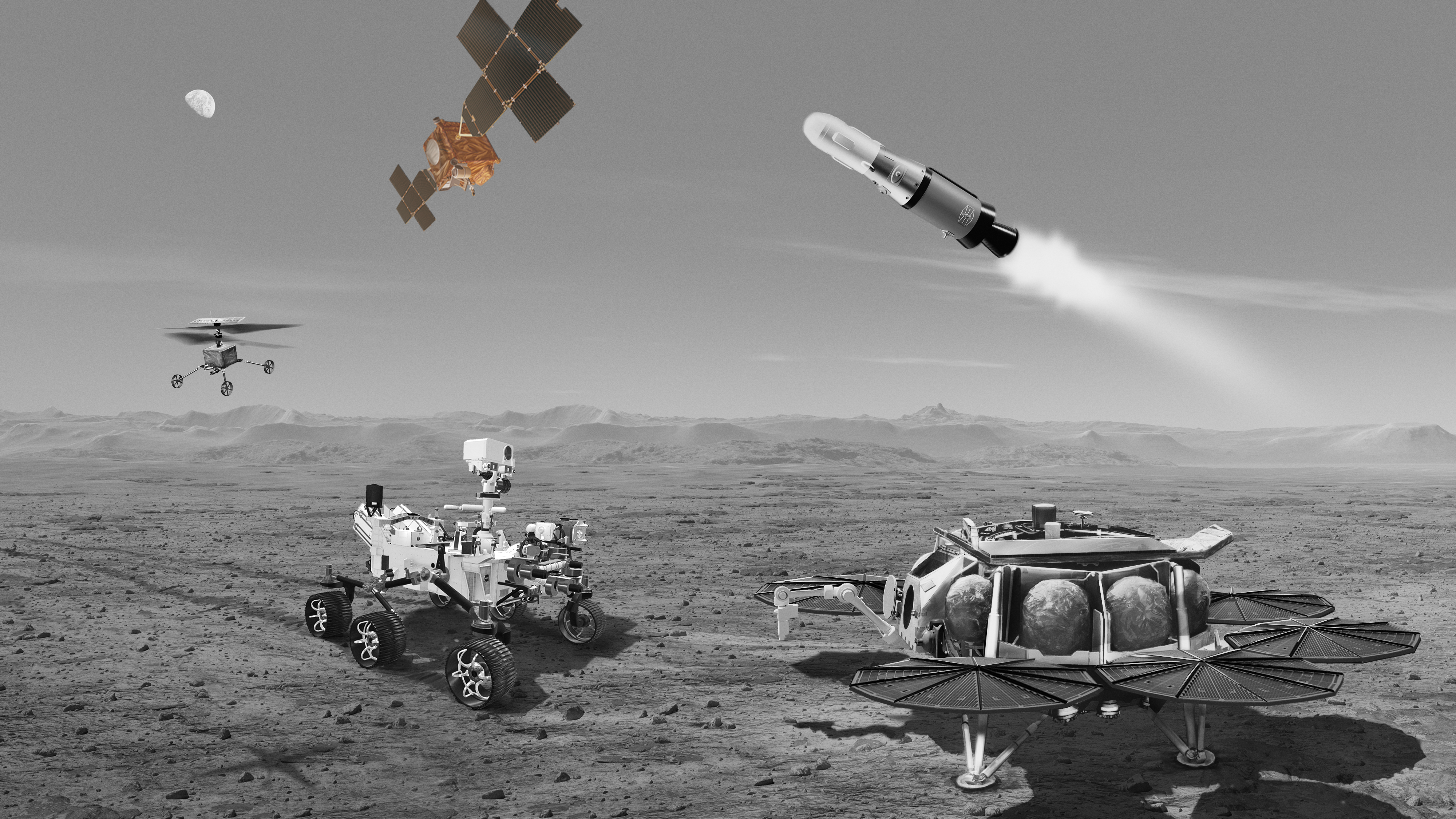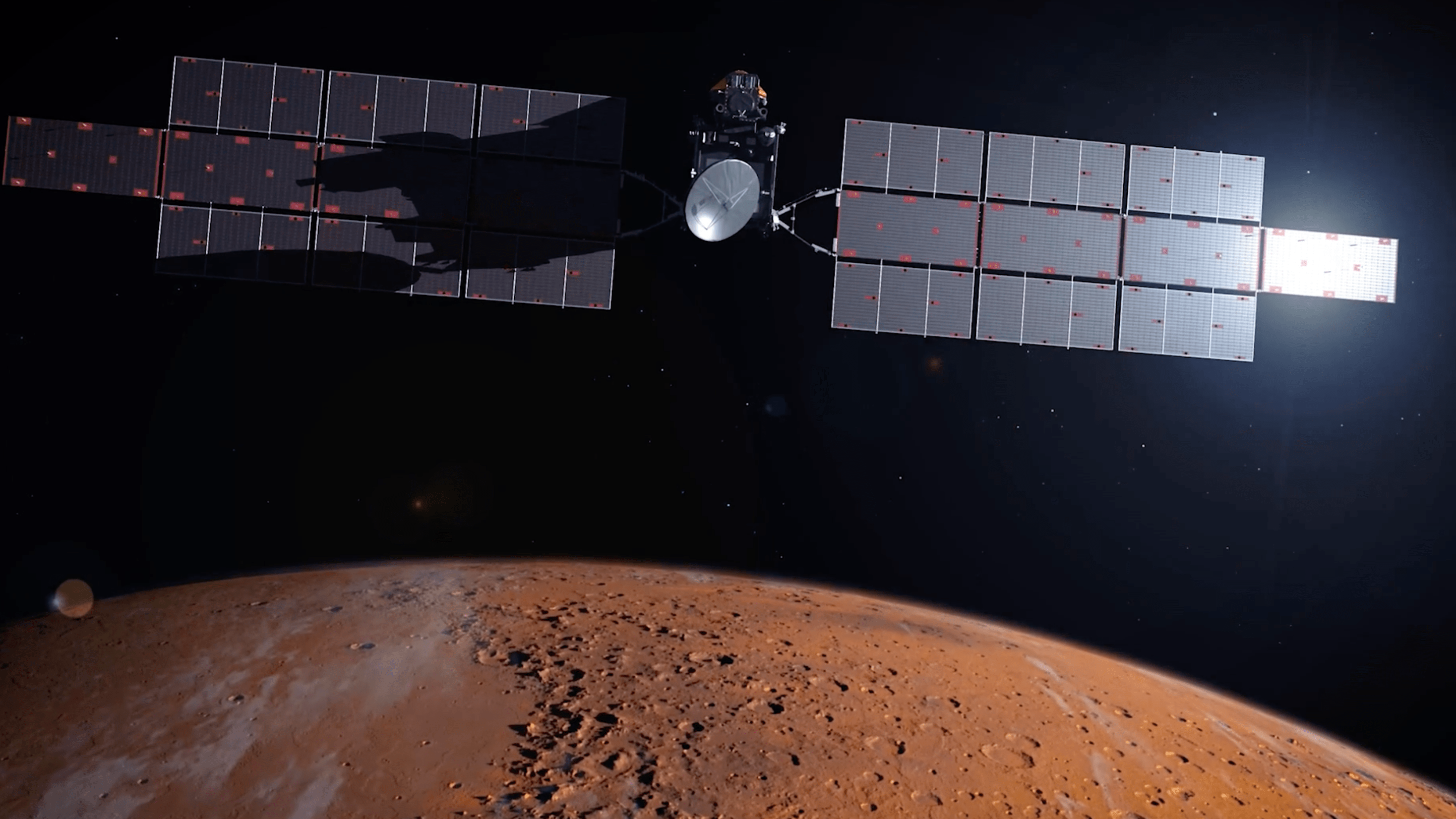Mars Sample Return
Earth Return Orbiter
The Earth Return Orbiter would be the first interplanetary spacecraft to capture an object in orbit around another planet and make a full round trip to Mars and back to Earth.

Overview
The Earth Return Orbiter (ERO), provided by ESA (European Space Agency), would be the first interplanetary spacecraft to capture an object in orbit around another planet and make a full round trip to Mars and back. It would also be the biggest-ever spacecraft to orbit the Red Planet.
The spacecraft would locate, intercept, and capture a volleyball-sized capsule launched from the surface of Mars carrying a carefully selected set of samples of Mars rocks and atmosphere previously collected by NASA's Perseverance rover.
The entire campaign would be operated autonomously away from Earth at over 31 million miles (about 50 million kilometers) away.
Once the orbiter has completed rendezvous, it would perform a maneuver to capture the Orbiting Sample (OS) container. To do this, ERO would use high-performance cameras to detect the OS at over 620 miles (1,000 kilometers) distance. Once "locked on" would track it continuously using cameras and LiDARs throughout the rendezvous phase all the way up to capture. Once captured, the Orbiting Sample container would be safely transferred within the Earth Entry System (EES).
About a week before arrival at Earth, and only after successfully completing a full system safety check-out, the spacecraft would be configured to perform the Earth return phase. When the orbiter is three days away from Earth, the EES would be released from the main spacecraft and fly a precision entry trajectory to a predetermined landing site. Shortly after separation, the orbiter itself would perform a series of maneuvers to enter orbit around the Sun, never to return to Earth.
Once safely on the ground, the OS container with the precious Martian samples would be transported to a specialized sample handling facility, where they would be prepared for investigation by top scientists and laboratories from around the world.

Orbiter Tech Specs
Wingspan | Approximately 125 feet (38 meters) |
Solar Panels | Approximately 474 square feet (144 square meters) |
Height | About 24.6 feet (7.5 meters) |
Weight/Mass | About 15,432 pounds (7,000 kilograms) |
Communications | X-band and Ultra High Frequency (UHF) antennas |
Propulsion System | Hybrid electric and chemical propulsion |
Payloads | NASA-provided Earth Entry System and Electra UHF Communications Package |
Earth Entry System

In the final step of bringing Mars samples to Earth, the Earth Entry System (EES) would protect the Orbiting Sample container of Martian sample tubes during its descent through Earth’s atmosphere to the surface.
When the Earth Return Orbiter, provided by ESA (European Space Agency), is three days from entering Earth’s atmosphere (about three times farther than the Moon is from Earth), it would eject the EES to embark on its rapid descent to Earth. Once in Earth’s atmosphere, it would take the EES about six minutes at a speed of around 90 mph (about 145 kph), to land at its target, the Utah Test and Training Range in west-central Utah.
After its confirmed landing, NASA would securely process, contain, and transport the capsule and its contents to a Sample Receiving Facility at a location to be determined. Through detailed study using tools and techniques available only on Earth, these first collected and returned samples could answer a key question: did life ever exist on Mars?
Entry System Tech Specs
Size | ~18 inches (.45 meters) high and ~4 feet (1.25 meters) wide |
Weight/Mass | ~200 pounds (~90 kilograms) |




